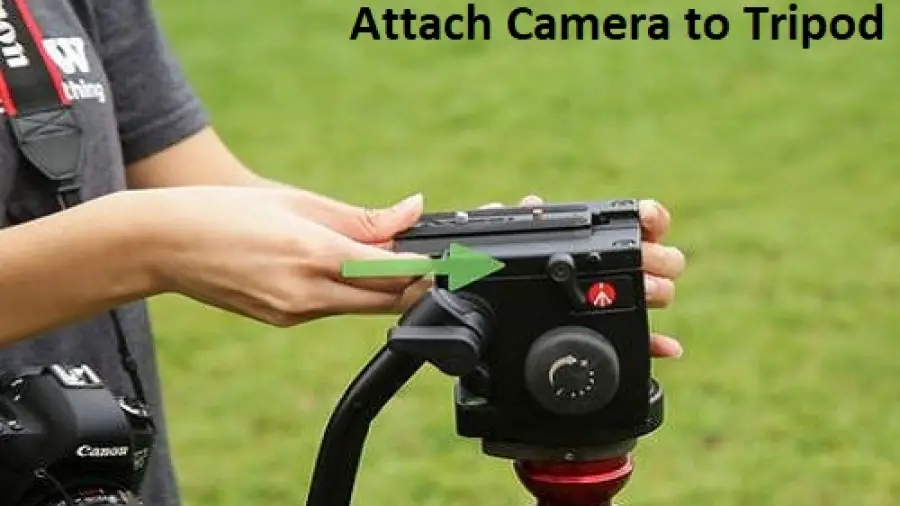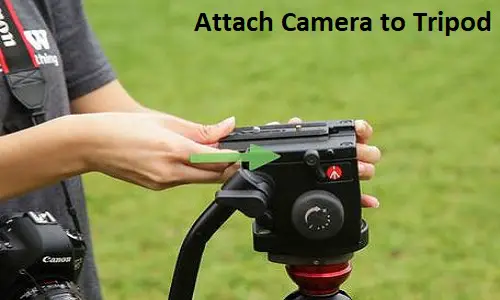Do you know How to Attach Camera to Tripod? Welcome to our step-by-step guide on attaching a camera to a tripod!
Understanding Your Tripod and Camera
Before starting, recognize your tripod’s and camera’s parts.
- Tripod head: This part moves. It helps aim the camera.
- Legs: These support the tripod and camera.
- Center column: It goes up and down for height.
- Camera plate: This plate connects the camera and tripod.
How to Attach Camera to Tripod? Full guides
Here’s a concise guide on how to attach your camera to a tripod:
-
Camera Plate Attachment:
- Start by attaching the quick-release plate to the bottom of your camera.
- Most tripods come with a detachable plate that fits into the tripod head.
- Align the plate’s screw hole with your camera’s tripod socket.
- Tighten the plate securely using the provided screw.
-
Tripod Head Connection:
- Place the tripod head (ball head or pan-and-tilt head) onto the tripod legs.
- Slide the quick-release plate into the head’s mounting slot.
- Ensure it clicks into place or locks securely.
- Tighten any knobs or levers to prevent movement.
-
Balancing the Camera:
- Adjust the camera’s position on the plate to achieve proper balance.
- Make sure the camera doesn’t tilt forward or backward.
- Fine-tune by sliding the plate forward or backward as needed.
-
Securing the Locks:
- Tighten the tripod head’s locking mechanisms.
- If using a ball head, lock the ball by twisting the main knob.
- For pan-and-tilt heads, tighten the individual knobs for each axis.
-
Test Stability:
- Gently shake the tripod to check stability.
- Ensure the camera remains steady and doesn’t wobble.
- Adjust as necessary.
Step-by-Step Instructions to Attach Your Camera
Follow these simple steps to attach your camera to the tripod:
- Find the camera’s tripod socket: This hole is at the camera’s bottom.
- Attach the camera plate: Screw the camera plate to your camera.
- Loosen the tripod head: Turn the knobs to move the head.
- Mount the camera: Place the plate onto the tripod head.
- Secure the camera: Tighten the plate so the camera is stable.
It is easy if you follow the steps!
Common Mistakes to Avoid
Ensuring a safe camera and tripod setup means avoiding these mistakes:
- Not tightening the camera plate enough.
- Forgetting to extend the tripod legs fully.
- Using a tripod that’s not strong for your camera.
Tips for a Stable Setup
To make sure your camera won’t fall, use these tips:
- Check tightness: Always double-check that camera plate.
- Balance weight: Don’t let the camera lean too much.
- Use a sturdy tripod: A good tripod won’t shake or fall.
Understanding Tripod Heads
Did you know there are different tripod heads? Let’s look:
| Type of Head | Features | Best for |
|---|---|---|
| Ball Head | Easy to move | Most photography |
| Pan-Tilt Head | Can move side to side | Videography |
| Gimbal Head | Great for heavy cameras | Wildlife photography |
Your tripod head affects camera movement.
Don’t miss to read: How to Transfer Photos from Canon Camera to Mac Wirelessly?
How to Connect CCTV Camera to Tv Without DVR?
How to Access Traffic Camera Footage?
Frequently Asked Questions On How To Attach Camera To Tripod
What Is A Camera Tripod Mount?
A tripod mount is typically a screw-based attachment that securely connects your camera to a tripod, ensuring stability during photography sessions.
How Do You Fix A Camera To A Tripod?
To fix a camera to a tripod, align the camera’s mounting hole with the tripod’s screw, then twist carefully until it’s snug and secure.
Can Any Camera Attach To A Tripod?
Most cameras come with a universal 1/4-inch tripod socket, making them compatible with the majority of tripods.
What Safety Precautions Should You Take?
Always ensure the tripod is on stable ground and the camera is tightly fastened to prevent accidental falls or tipping.
Why Won’t My Camera Attach To The Tripod?
If your camera won’t attach, check for compatibility issues between the tripod’s screw size and the camera’s mounting hole.
How Tight Should A Camera Be On A Tripod?
The camera should be tight enough to prevent movement but not overly forced, which could cause thread damage to the camera.

